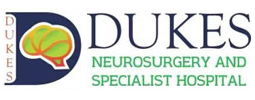Nearsightedness is increasing and may run in families. But is it inevitable? A Nigerian optometrist offers insights into this common vision problem.
When many adults today were growing up, the common belief was that vision problems were diagnosed rather than prevented. Most of us had our first vision checks at school or during visits to the pediatrician. If there was an issue, then we would see an optometrist.
The problem with this approach is that it doesn’t do much for prevention. Childhood eye checkups give parents a chance to learn how to protect their child’s eyes and address issues early on when they’re most treatable.
If you ended up needing vision correction later in life, it’s not your parents’ fault. There hasn’t been much focus on preventive eye care for kids until recently, when studies began examining the effects of screen time and reduced outdoor play on young eyes.
Lately, parents have been hearing more about the rise in nearsightedness — where close-up objects appear clearer than those far away — in kids. Rates of nearsightedness (myopia) are doubling among elementary school-aged children in many parts of the world, including Nigeria.
Parents might wonder, “So is there anything I can actually do about it?” The short answer is yes. Here’s what you need to know about preventing and slowing myopia in children.
Is Myopia Really Increasing in Kids — or Are We Just Paying More Attention?
Nearsightedness has been on the rise for decades. According to the Nigerian Optometric Association, the prevalence of myopia has significantly increased over the years.
Some of this increase is due to earlier detection, thanks to better diagnostic technology and a push for earlier eye exams. However, it’s not just about detection. Recent decades have seen children spending less time outdoors and more time on screens. Research has linked these habits to an increased risk of myopia in kids.
The COVID-19 pandemic worsened the situation: children were spending more time on screens for school, outdoor activities were canceled, and routine vision checks were delayed.
When Should Kids Begin Visits to the Optometrist?
It’s recommended that children have their first comprehensive eye exam at 6 months old, then at least two more times before starting primary school. This can be remembered as the three-before-school rule.
If your child hasn’t met these vision-check goals or missed their scheduled eye exams due to the pandemic, make an appointment to get them back on track as soon as possible.
Kids should see an optometrist sooner if something seems wrong. Symptoms like headaches, an eye starting to turn, or clumsiness can indicate a vision problem. Trust your instincts and get it checked out if you suspect an issue.
How Much of a Difference Do Early Appointments Make?
“The earlier we can correct problems in kids, the better the outcomes,” says a Nigerian optometrist. Children’s prescriptions for distance lenses tend to stabilize around age 10 or 12. To slow the onset or progression of myopia, it’s crucial to see them well before that age. While we can’t prevent myopia, we can often delay its onset or slow its progression.
Early eye exams benefit more than just distance vision. For example, diagnosing colorblindness in preschool can help with a child’s confidence. Early vision checks mean parents can inform teachers, preventing kids from feeling like they’re doing something wrong.
How Much Do Genetics Have to Do With Nearsightedness?
Genetics play a significant role. A child with two myopic parents has a 50/50 chance of developing myopia. If only one parent is nearsighted, the chance drops to 1 in 3. If neither parent is myopic, the chance falls to 1 in 4. The severity of the parents’ myopia also matters. Parents with high prescriptions are more likely to have children with high prescriptions.
Why Does Prescription Strength Matter?
Myopia typically occurs if the eyeball is too long. This elongation forces the retina to stretch, making it thinner and more prone to tears or detachment. Besides causing nearsightedness, a stretched retina increases the risk of serious vision problems like glaucoma, cataracts, and retinal detachment.
For patients with high myopia (prescriptions over -6.00), these conditions are more common. However, keeping a child’s prescription under -3.00 significantly reduces these risks. Slowing down vision changes and keeping prescriptions low delivers lifelong benefits.
What Can Optometrists Do to Slow the Progress of Myopia?
Optometrists use several treatments to help the eye maintain its rounded shape and prevent elongation of the retina:
- MiSight contact lenses: These daily disposable lenses are approved for children aged 8 to 12 to correct and slow myopia. They have a dual-focus design that helps children see clearly and slow down the elongation of the eyeball.
- Orthokeratology (Ortho-K) rigid contact lenses: Worn during sleep, these lenses reshape the eye. Often, this means the child doesn’t need glasses or contacts during the day.
- Low-dose atropine eyedrops: These prescription drops slow the growth and elongation of the eyeball. They are a good solution for kids who aren’t ready for contact lenses and may offer extra benefits when used with Ortho-K lenses.
Is There Anything Parents Can Do at Home That May Help?
Parents can support their children’s eye health with these three approaches:
- Teach kids the 20/20/20 rule: Encourage kids to take a 20-second break every 20 minutes and look at something 20 feet away when doing close-up work like reading or using a screen. Set a timer on their device to remind them.
- Encourage outdoor play: Spending time outdoors helps the eyes by looking at distant objects and exposing them to natural light, which reduces myopia risk. Aim for at least two hours of outdoor time daily.
- Get your child’s input: If a child needs corrective lenses, consider their preference. Some kids may prefer contacts over glasses. Optometrists now have various options, making it easier to find a suitable plan for each child.
Taking these steps can help manage and slow the progression of myopia, ensuring better eye health for your child.



